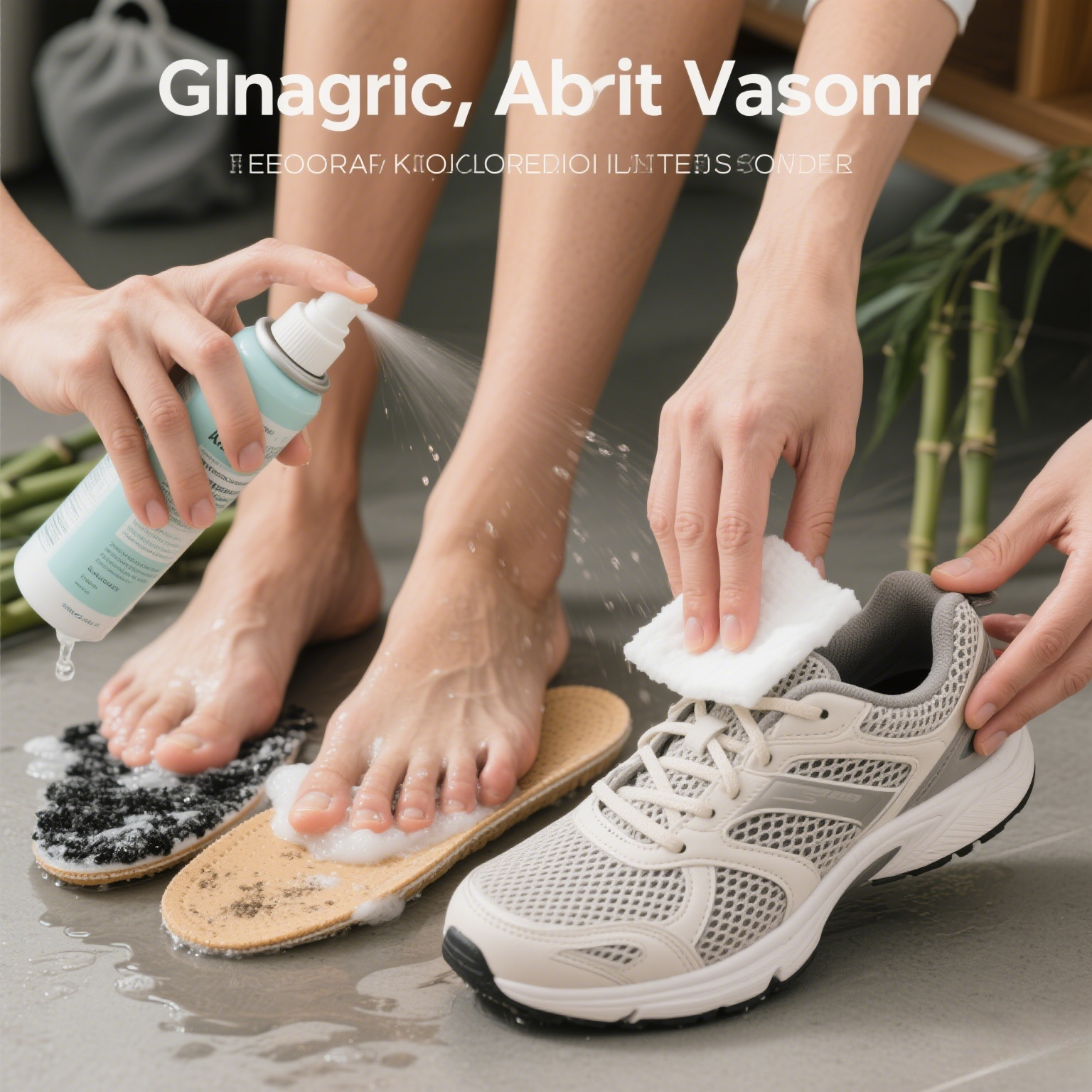5 steps to say goodbye to the trouble of shoe odor: a complete guide from cleaning and care to scientific deodorization
The odor of shoes not only affects the daily experience, but also may become a breeding ground for bacteria. This article combines professional care methods and practical skills to provide a systematic solution to help you effectively solve the problem of shoe odor and keep your shoes and socks fresh for a long time.
1. Basic cleaning: the key to daily maintenance of shoes
Regular cleaning is the first step to prevent odor. Use mild soapy water (water temperature 30-40℃) and a soft cloth to wipe the upper of the shoe every week, focusing on cleaning the shoe mouth, sole edge and other parts that are prone to dirt accumulation, and avoid using irritating detergents to damage the material. After cleaning, you need to dry it thoroughly. You can put absorbent paper towels or dry cloth in the shoes and place them in a ventilated place to dry them in the shade to avoid direct sunlight causing aging of the uppers.
Use a desiccant to enhance the effect: Choose a bamboo charcoal bag or an activated carbon bag (it is recommended to place 1-2 bags per pair of shoes), use its adsorption to remove moisture and odor in the shoes, put them in before going to bed every night, and take them out in the morning.

2. Foot management: Control odor at the source
Keeping feet clean and dry is the core measure. Wash your feet with warm water and soap every day, carefully clean the gaps between the toes (areas prone to breeding bacteria), and dry them with a clean towel after washing, especially between the toes. Before wearing shoes, you can apply a small amount of prickly heat powder or antiperspirant lotion on your feet to reduce sweat secretion and create a dry environment.
Choose breathable shoe and sock materials: Cotton socks have better moisture absorption and perspiration than chemical fiber materials. Paired with breathable uppers such as leather and mesh cloth, they can effectively reduce the humidity in the shoes and reduce the conditions for odor breeding from the source.
3. Product assistance: Correct use of deodorant spray
The commercially available professional shoe deodorant spray is an effective tool for rapid deodorization. It is recommended to choose products containing silver ions, tea tree essential oil and other ingredients, which have both bactericidal and odor-inhibiting functions. When using, spray evenly at a distance of 10-15 cm from the inside of the shoe, focusing on covering the insole, tongue and heel, and 2-3 pumps each time. Be careful to avoid metal decorations or special fabrics, and let it sit for 10 minutes before wearing.
For scenes with heavy odors such as after exercise, you can spray it again in time after changing shoes to enhance the deodorizing effect and keep the shoes fresh all day.

IV. Insole maintenance: regular replacement and material selection
Insoles are the main carrier of odors. It is recommended to replace them every 1-2 months, and sports enthusiasts or people with sweaty feet can shorten it to 3 weeks. When purchasing, give priority to antibacterial and breathable models, such as insoles containing activated carbon, memory foam or mildew-proof coatings, to improve moisture absorption and antibacterial capabilities.
Tips for cleaning old insoles: Soak in baking soda water (50g baking soda to 2L warm water) for 30 minutes, scrub and dry, and can be sterilized with ultraviolet light to extend the use cycle or use as spare insoles.
5. Advanced skills: multi-scenario response strategies
1. Special material treatment
Leather shoes: Use a soft cloth dipped in diluted white vinegar (water-vinegar ratio 2:1) to wipe the inside of the shoes to neutralize odor and inhibit bacteria, and then place camphor wood chips to add natural fragrance
Sports shoes: Spray 75% medical alcohol inside the shoes (spray evenly with a spray bottle), use alcohol evaporation to sterilize, and pay attention to avoid rubber parts to prevent aging
2. Storage and rotation habits
Prepare special shoe racks for classified storage, separate worn shoes from clean shoes to avoid cross-odor. The same pair of shoes should not be worn for more than 2 consecutive days to allow enough time for ventilation and odor dissipation, and use multiple pairs of shoes in rotation to reduce the burden of a single shoe.
Through the above complete solution from cleaning, care to product use, combined with the correct shoe wearing and storage habits, more than 90% of shoe odor problems can be effectively improved. The key is to adhere to daily maintenance and invest a small amount of time in shoe and sock management every week, so that you can gain a long-lasting and fresh wearing experience and say goodbye to odor troubles.
 Français
Français Deutsch
Deutsch Pусский
Pусский XIWC
XIWC